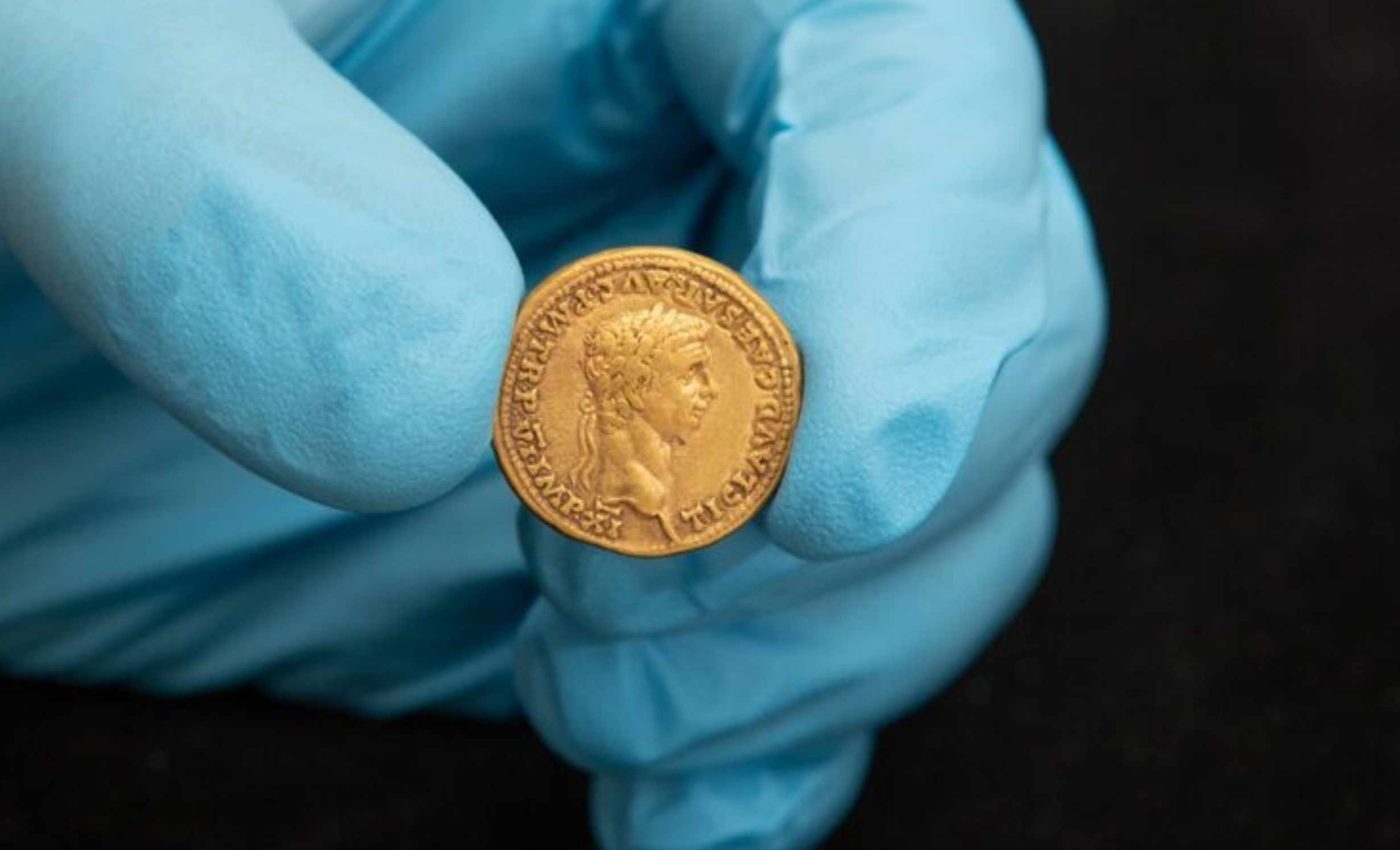
Hundreds of gold and silver coins found after being buried for 2,000 years
In October 2023, two searchers uncovered 404 ancient gold and silver coins near Bunnik in the central Netherlands. The mixed stash points to soldiers moving between Britain and the continent during the early Roman conquest.
The youngest coins were struck under Emperor Claudius around the time Rome invaded Britain. The trove is now on view at the National Museum of Antiquities in Leiden.
Why the Bunnik hoard matters
The first analysis confirms the total count and the unusual mix of Roman and British currency, a combination not previously documented on mainland Europe.
It ties a field in Utrecht province to a specific moment when armies crossed the North Sea, fought, and returned with pay and prizes.
The hoard was buried along the Lower Germanic limes, the Roman frontier line across the Netherlands, which channeled troops and supplies. That corridor helped stage the invasion of Britain and later received returning units.
Lead researcher: Anton Cruysheer, archaeologist at the Utrecht Landscape and Heritage Foundation, coordinated identification and study of the coins. His team linked the composition to military movements during the Claudian era.
“This is the first time that physical evidence of the return of the troops has been found. That is new information,” said Anton Cruysheer, archaeologist at the Utrecht Landscape and Heritage Foundation (ULHF).
What the coins tell us
British gold pieces in the hoard are staters, a Celtic gold coin used in southeastern Britain, often carrying the Latinized name of King Cunobelinus.
Roman gold aureus, a high value coin used for large payments, and silver denarius, the standard pay unit for soldiers, make up the rest of the bundle.
The mix spans Republican silver to fresh Claudian issues without heavy wear. That pattern matches money assembled quickly rather than saved over a lifetime.
Two gold pieces are die-matched, struck from the same engraved tool, which often means a single minting batch issued together. Their crisp surfaces suggest burial soon after payout.
Soldiers carried Bunnik hoard
Campaign pay did not arrive in a single form. A commander could add a donativum, a special cash gift to mark success, on top of regular wages.
British staters likely came home as captured money or forced tribute gathered during the first phase of the invasion. Roman coins look like wages and bonuses issued to the same units that crossed back.
Such bundles traveled well because coins compressed value into durable metal. Mixed currency did not matter to troops who could spend or melt metal wherever paymasters operated.
The Bunnik set reads like a pay packet and prize bundle from the Claudian campaigns. It records the economics of war as clearly as any inscription.
Where it was hidden and why
Investigators recovered coins from farm soil shallowly buried under about 12 inches of earth. Ploughing had scattered pieces from a small pit near a water channel.
That watery zone was unsuitable for settlement in Roman times. It works as a place for a hurried hide or as a spot chosen for an offering.
Ritual deposits were common across the frontier landscape. A safe return from a long campaign could move someone to give thanks with hard cash.
Another possibility is practical. A soldier or officer cached a large payout and never returned to collect it.
From field to museum
The finders reported the discovery to Utrecht’s heritage service and to Portable Antiquities of the Netherlands. Specialists cleaned the coins and recorded them for researchers.
The Bunnik hoard is cataloged in Oxford’s CHRE, an international numismatic database that logs coin hoards across the Roman world.
Most of the coins have entered the National Archaeology Collection in Leiden. Visitors can see them in the museum’s permanent exhibition.
The display sets the coins alongside forts, river routes, and troop communities that defined life along the Rhine frontier. It connects the stash in the ground to the people who used it.
Clues hidden in plain metal
The British staters carry the Latinized name “CVNOBELINVS.” Several were likely struck just after Cunobelinus died, under his successors Togodumnus or Caratacus.
Roman portraits run from the Republic through Claudius, showing how older silver lingered in pay chests. Fresh Claudian pieces point to the invasion period itself.
A coin of Juba of Numidia in North Africa appears among the silver. That outlier speaks to Rome’s vast reach, long before the Bunnik hoard coins crossed the North Sea.
Together the pieces sketch logistics as much as loot. Money moved with men, and the frontier knitted their routes together.
Future study of the Bunnik hoard
The hoard gives a rare, datable snapshot of money on the move. It locks an army’s pay and prizes to a specific place far from any big fort.
It also shows how borders work. Frontier zones are less walls than channels for people, goods, orders, and ideas.
For students of Roman Britain, the Bunnik coins add a continental endpoint to a story often told from the island side. The evidence helps test narratives drawn from ancient histories.
For the region around Utrecht, the hoard anchors local landscapes to global events. A quiet field becomes a ledger of war, wages, and return.
The study is published in The Bunnik Hoard 2023.
—–
Like what you read? Subscribe to our newsletter for engaging articles, exclusive content, and the latest updates.
Check us out on EarthSnap, a free app brought to you by Eric Ralls and Earth.com.
—–













